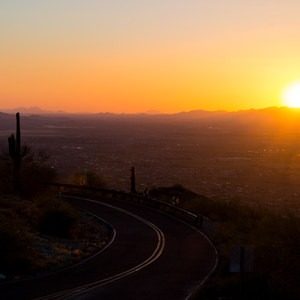You are here
This ghost town is unlike others in Arizona. It is not the remains of a bypassed railroad hub or a boom-and-bust mine, but of an internment camp. The Gila River War Relocation Center was built in 1942 to imprison Japanese Americans during World War II, which was part of the United States' retaliation after Pearl Harbor. Two internment facilities were established here, Canal and Butte Camps. During their three-year operation from 1942 to 1945, they collectively housed thousands of forcibly relocated people, mostly from Southern California. The peak population was over 13,000 in these camps designed for no more than 10,000.
Life in internment was tough. In this unrelenting desert 30 miles south of Phoenix, Arizona, summertime temperatures regularly soar above 100 degrees. Cloud cover and rainfall are scarce. Workers labored in agricultural fields irrigated by canals from the nearby Gila River, or worked construction to expand the camp. Within the fenced community, which was patrolled by armed guards, were hundreds of buildings including residences, mess halls, shops, schoolhouses, churches, a hospital, and a theater. There were also playgrounds and a baseball field. Because of harsh conditions, frequent water shortages, and overcrowding, some detainees died in the camp or in transit to be placed there. Survivors were eventually released and sent away with minimal provisions and scant prospects for employment.
The relocation center was built on the Gila River Indian Reservation despite objections by the tribe, who did not want government oppression similar to what they had experienced happening any more on their land. Today the site is owned by the tribe, and adjacent land is still farmed by local residents. No buildings remain from the camps, but many traces can be found. Concrete foundations, bricks, pieces of wood, ceramic shards, pipes, irrigation ditches, and the raised grids of streets are easily observed. There now stands a memorial to the internees. It is a white arch-like monument with a few informative plaques, and it overlooks the valley of fields and orchards where Butte Camp once was. Even less remains of Canal Camp, which was located about 2 miles farther east.
Restricted access is allowed by the tribe, with a permit. They do not want it to become a tourist destination, and they may not grant access to everyone who requests it. For more information and to apply for a permit, contact [email protected] or the tribal office in Casa Blanca. The site is intentionally difficult to find, and is accessible only by dirt roads with no signs leading to it. Please tread lightly and with utmost reverence for past grievances and current residents. Drive and walk on roads only. All land here is private to the tribe.








Comments
Sign In and share them.